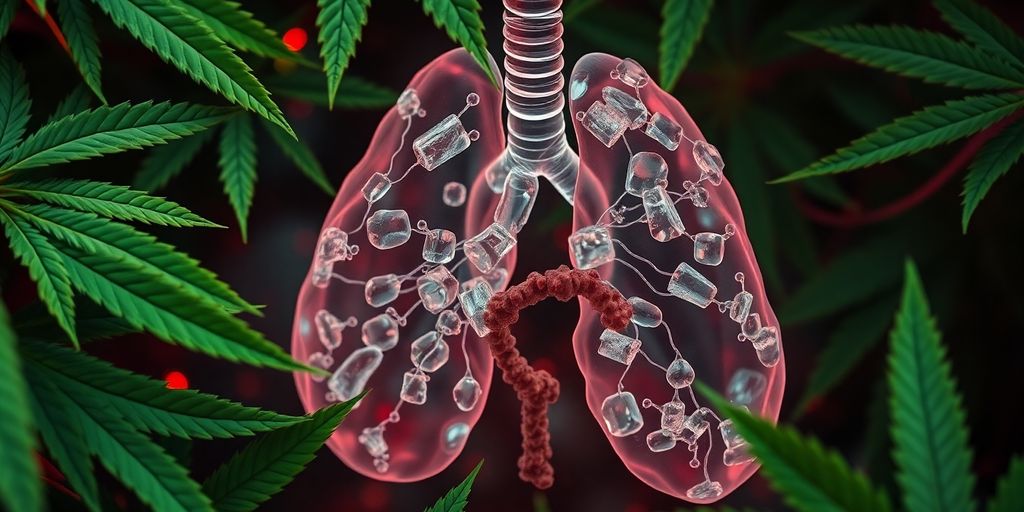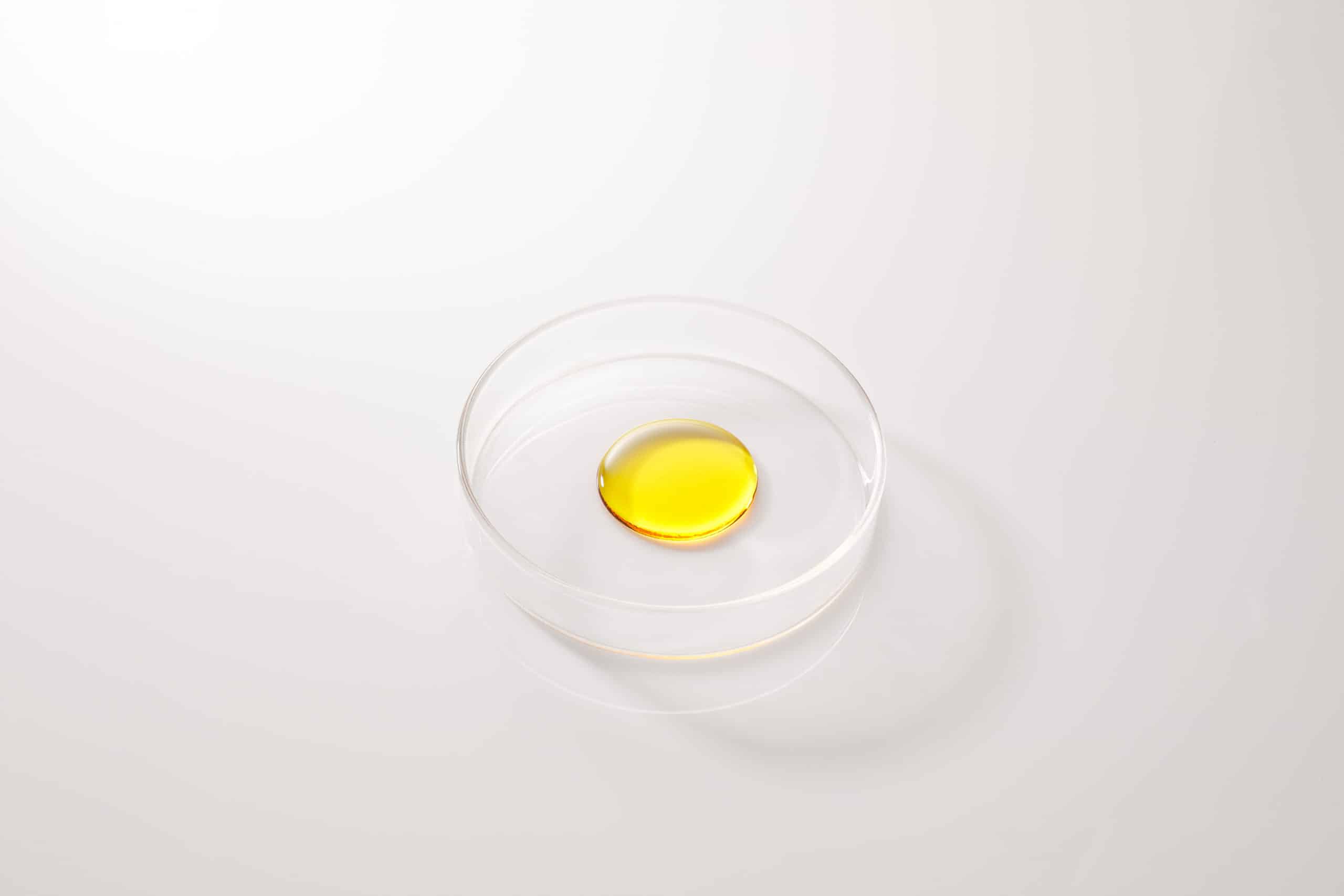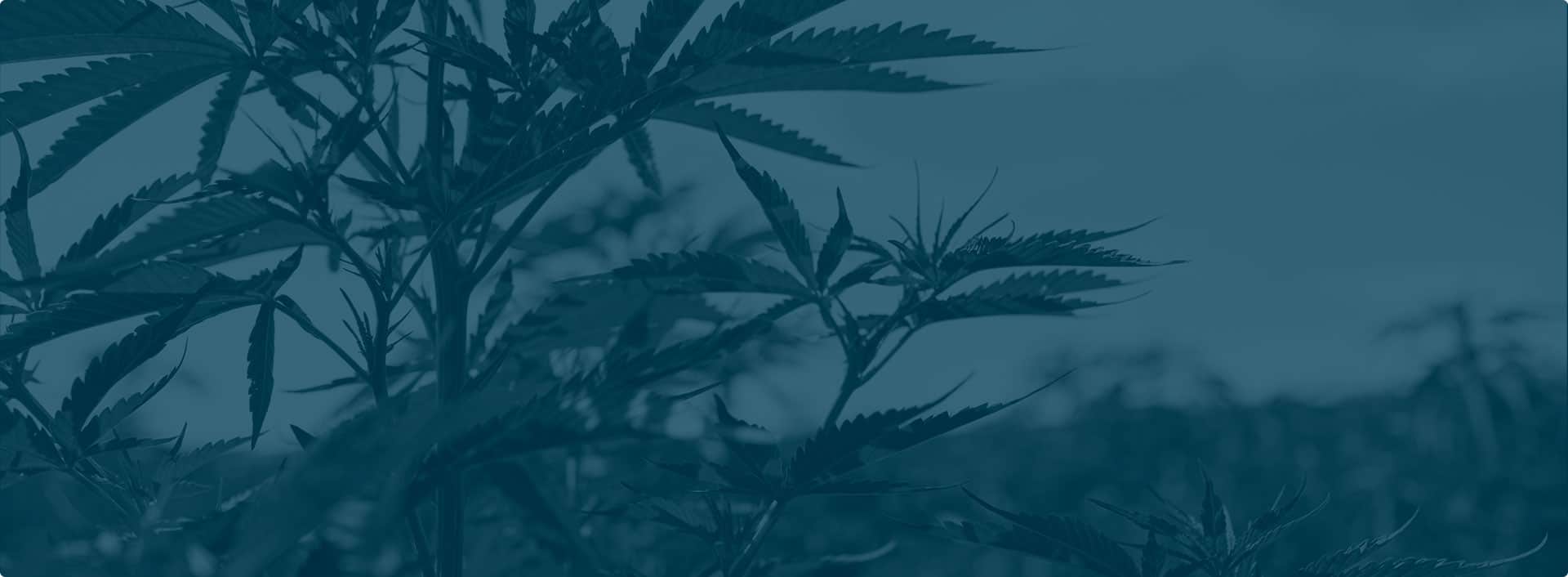A recent study published in MDPI’s Cancer Journal suggests that CBD may have significant potential in supporting lung health, particularly in cases of stress or inflammation. Scientists have conducted laboratory and animal studies to investigate CBD’s effects on lung cells under adverse conditions. The findings indicate that CBD could provide a protective and calming effect on lung cells during periods of stress or injury. This growing body of evidence, supported by both in vitro and in vivo studies, offers promising insights into CBD’s therapeutic potential for respiratory health.
Key Takeaways
– CBD might help protect lung cells from oxidative stress and inflammation, both in lab settings and in living organisms.
– The compound seems to boost the production of heme-oxygenase-1, a protein that helps fight off stress in cells.
– In animal studies, CBD reduced markers of inflammation and helped with lung recovery after radiation exposure.
– There’s a bit of a twist, though. In cancer cells, CBD might actually increase stress, which could be a double-edged sword.
– While promising, more research is needed to figure out the best doses and methods for using CBD in lung health.
Mechanisms of CBD in Lung Cell Protection
Role of Heme-Oxygenase-1 in Oxidative Stress
CBD seems to play a big part in lung cell protection by influencing the expression of heme-oxygenase-1 (HO-1). This enzyme acts as a defensive shield against oxidative stress, which is basically the damage caused by free radicals. In studies, CBD has been shown to boost the levels of HO-1, helping cells fend off oxidative harm. It’s like giving your cells a little extra armor to wear. This increase in HO-1 is crucial because it helps balance out the oxidative stress that can lead to cell damage and inflammation.
While CBD protects lung cells, CBD research on autism spectrum disorder demonstrates significant improvements for affected children.
Impact on Inflammatory Markers
Inflammation is another area where CBD shows promise. When cells are under attack, they release signals that can cause inflammation. CBD seems to calm these signals down. It reduces the expression of inflammatory markers like ICAM-2 and MCAM. Think of it as turning down the volume on a noisy radio. With less inflammation, the cells can recover and function more normally, which is particularly important in the sensitive tissues of the lungs.
Effects on Pro-Angiogenic Responses
Pro-angiogenic responses are all about blood vessel growth, which can be a problem if it gets out of control. CBD appears to regulate these responses by affecting markers such as VE-cadherin and Endoglin. This regulation helps ensure that new blood vessel growth doesn’t go haywire, which could otherwise lead to complications. By keeping these processes in check, CBD helps maintain a balanced environment in lung tissues, promoting overall lung health.
The role of CBD in protecting lung cells is multi-faceted, involving the modulation of oxidative stress, inflammation, and angiogenesis. By targeting these areas, CBD provides a comprehensive approach to maintaining lung health, potentially offering new avenues for therapeutic interventions.
In Vitro Studies on CBD and Lung Cells
Reduction of Radiation-Induced ROS
In studies conducted in vitro, CBD has shown promise in reducing reactive oxygen species (ROS) levels that are typically elevated due to radiation exposure. These findings suggest that CBD could play a protective role against oxidative stress in lung cells. For instance, in experiments involving murine lung endothelial cell lines, CBD treatment resulted in a significant decrease in radiation-induced ROS levels. This reduction was comparable to that achieved by N-acetylcysteine (NAC), a well-known antioxidant, indicating that CBD might be just as effective in mitigating oxidative damage.
Comparison with Other Antioxidants
When comparing CBD with other antioxidants, it becomes evident that CBD holds its ground. CBD’s effectiveness in lowering oxidative stress is often on par with traditional antioxidants like NAC. This comparison is crucial because it helps in understanding how CBD could be integrated into existing treatment protocols. Notably, no antagonistic effects were observed when CBD was used alongside other antioxidants, suggesting potential for combined therapeutic strategies.
Cellular Responses to CBD Treatment
The cellular response to CBD treatment in vitro is quite intriguing. Cells exposed to CBD often show a reduction in markers of oxidative stress and inflammation. This response highlights CBD’s potential as a protective agent in cellular environments prone to oxidative damage. The modulation of these cellular pathways by CBD may offer insights into how it can be used to support lung health, especially in conditions where oxidative stress is a significant concern.
The exploration of CBD in vitro showcases its potential to shield lung cells from oxidative damage. As research progresses, understanding these mechanisms could pave the way for new therapeutic applications in lung health management.
In Vivo Effects of CBD on Lung Health
Animal Model Studies
In animal studies, CBD has shown promising effects on lung health, particularly when dealing with oxidative stress and inflammation. Researchers have used various animal models to study these effects. CBD treatment has been associated with reduced markers of inflammation and oxidative stress in these models. For example, in mice, CBD administration prior to and following lung irradiation has led to decreased oxidative damage and inflammation.
Long-Term Treatment Outcomes
The long-term effects of CBD on lung health have been explored in several studies. CBD appears to reduce the harmful effects of prolonged oxidative stress and inflammation in the lungs. In one study, mice treated with CBD for four weeks showed significant improvements in lung function and structure compared to untreated controls. This suggests that CBD could potentially be used as a long-term treatment to protect lung health.
CBD Dosage and Administration
When it comes to dosage and administration, studies have shown that a daily dose of CBD can be effective without causing toxic side effects. The typical dosage used in animal studies is around 20 mg/kg body weight, administered intraperitoneally. This dosage has been found to be safe and effective in reducing lung inflammation and oxidative stress. However, the exact dosage and method of administration may vary depending on the specific needs and conditions of the patient.
Contradictory Responses in Cancer Cells

Increased ROS in Cancer Cells
When CBD is used on cancer cells, something unexpected happens. Instead of reducing oxidative stress, it actually increases ROS, or reactive oxygen species. It’s a bit puzzling because, in normal cells, CBD tends to lower ROS levels. This difference is still not fully understood, but researchers think it might be due to the unique way cancer cells handle metabolism and redox states.
Therapeutic Window of CBD
There’s a concept called the “therapeutic window” of CBD. This is the range where CBD can either protect cells by reducing oxidative stress or, on the flip side, increase ROS to a level that might lead to cell death. It’s like walking a tightrope; the effects can swing dramatically depending on the dose and the type of cell.
Metabolic State and Sensitivity
Cancer cells often have a messed-up metabolism and redox balance. This might explain why they react differently to CBD compared to normal cells. Their altered state could make them more sensitive to changes in ROS levels, which might be why CBD has such varied effects depending on the cell type.
Clinical Implications of CBD Treatment
Potential in Radiotherapy
CBD is showing promise as a complementary treatment in radiotherapy. It has the potential to minimize the harmful side effects of radiation on lung tissue. By reducing oxidative stress and inflammation, CBD may help protect lung cells during treatment, potentially leading to better patient outcomes.
Reducing Toxic Side Effects
One of the key benefits of CBD treatment is its ability to mitigate the toxic side effects commonly associated with traditional cancer therapies. This includes reducing inflammation and oxidative damage in non-cancerous cells, which can lead to improved quality of life for patients undergoing treatment.
Future Research Directions
Future studies should focus on understanding the precise mechanisms by which CBD exerts its protective effects on lung cells. Key areas of interest include the impact of CBD on immune signaling and cytokine production, as well as its potential anti-tumor effects. Additionally, determining the optimal dosage and timing for CBD administration in conjunction with radiotherapy will be crucial for maximizing its therapeutic benefits.
As research progresses, CBD could become a vital component in the fight against cancer, offering new hope for patients seeking less toxic treatment options.
Comparative Analysis of CBD and Other Treatments

Efficacy Against Traditional Therapies
When comparing CBD to traditional treatments for lung issues, it’s clear that CBD offers some unique benefits. CBD has shown a potential to reduce oxidative stress and inflammation in lung cells, which are common problems in various lung conditions. Traditional therapies, like corticosteroids, often come with a range of side effects, including immune suppression and increased infection risk. CBD, on the other hand, might provide similar benefits with fewer side effects.
– Traditional therapies often require long-term use, which can lead to complications.
– CBD’s natural origin might appeal to those seeking alternative medicine options.
– Studies suggest that CBD could complement existing treatments, potentially enhancing their efficacy.
Synergistic Effects with Other Compounds
There’s growing interest in how CBD interacts with other compounds. Combining CBD with other antioxidants, for example, might amplify its protective effects on lung cells. This synergy could be particularly beneficial in managing oxidative stress, a key factor in many lung diseases.
– Research indicates possible enhanced effects when CBD is used alongside other natural compounds.
– Patients might experience improved outcomes with combined treatments.
– The combination of CBD with traditional therapies could lead to reduced dosages and fewer side effects.
Limitations of Current Research
Despite promising results, research on CBD’s role in lung health is still in its early stages. Many studies are limited by small sample sizes and short durations. Additionally, the variability in CBD formulations means results can differ significantly between studies.
– More extensive clinical trials are needed to validate initial findings.
– Standardization of CBD products is essential for consistent results.
– Long-term effects of CBD use in lung health remain largely unknown.
The potential of CBD in treating lung conditions is exciting, but it requires more robust research to fully understand its benefits and limitations. As studies continue, we might see CBD becoming a staple in lung health management alongside traditional therapies.
Regulatory and Safety Considerations
Legal Status of CBD
Navigating the legal landscape of CBD can be confusing. CBD’s legal status varies greatly across different countries and even within regions of the same country. In the United States, for instance, it’s legal at the federal level but state laws can differ widely. Some states allow CBD use freely, while others have restrictions. In Europe, the legal framework is equally diverse, with countries like the UK and Germany having clear regulations, whereas others are still developing their stance.
Safety Profile in Clinical Use
When it comes to safety, CBD is generally well-tolerated. However, it’s not without its side effects. Common issues include dry mouth, fatigue, and changes in appetite. More serious concerns can arise with high doses or prolonged use, such as liver damage or interactions with other medications. Clinical trials continue to explore these safety parameters to better understand who might be at risk and how to mitigate these effects.
Public Perception and Acceptance
Public perception of CBD has shifted dramatically over the years. Initially met with skepticism due to its association with cannabis, it’s now increasingly seen as a therapeutic option. This change is driven by growing awareness and acceptance of its potential health benefits. However, misconceptions remain, often fueled by a lack of reliable information and sensationalized media reports. Education and transparent communication are key to further improving public understanding and acceptance.
Conclusion
In wrapping up, this study sheds light on the potential benefits of CBD in protecting lung cells from oxidative stress and inflammation, both in lab settings and living organisms. The findings suggest that CBD might help reduce the harmful effects of radiation on lung tissues by boosting the body’s natural defense mechanisms. While these results are promising, it’s important to remember that more research is needed to fully understand how CBD works in this context. As science progresses, we may see CBD playing a bigger role in treatments aimed at minimizing radiation damage. For now, these insights open up new avenues for exploring how CBD can be integrated into therapeutic strategies.
Frequently Asked Questions
What is CBD and how does it work?
CBD, or cannabidiol, is a compound found in cannabis plants. It interacts with the body’s endocannabinoid system, which helps regulate various functions like sleep, mood, and pain. Unlike THC, CBD doesn’t make you feel “high.”
Can CBD really protect lung cells?
Research shows that CBD might help protect lung cells from damage caused by oxidative stress and inflammation. It seems to do this by boosting certain protective proteins in the cells.
Is CBD safe to use for lung health?
While some studies suggest that CBD could be beneficial for lung health, more research is needed. It’s important to talk to a doctor before using CBD, especially if you have existing health conditions.
How is CBD given in these studies?
In some studies, CBD is given to animals through injections or added to their food. The exact method can vary depending on the study’s design.
Does CBD have the same effect on cancer cells?
Interestingly, CBD might increase stress in cancer cells, which is different from its effect on normal cells. This could make cancer cells more vulnerable to treatments.
What are the legal issues with using CBD?
The legality of CBD varies by location. In some places, it’s legal for medical or recreational use, while in others, it might be restricted. Always check local laws before using CBD.





